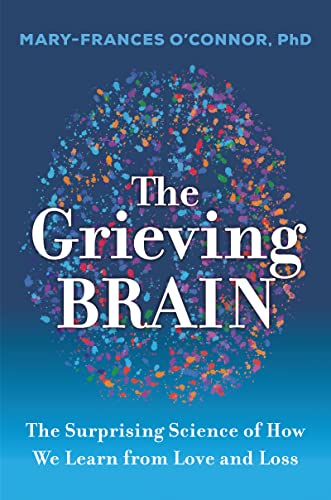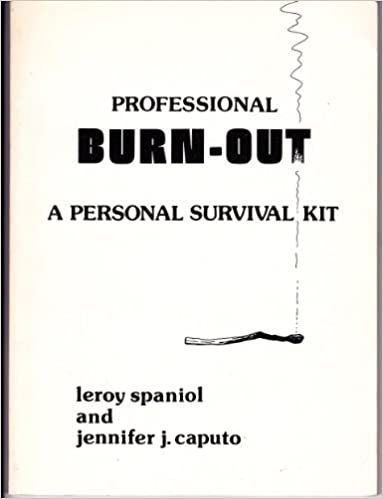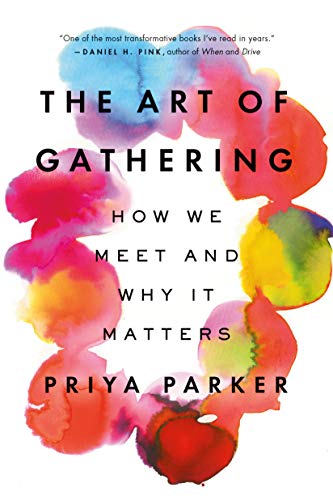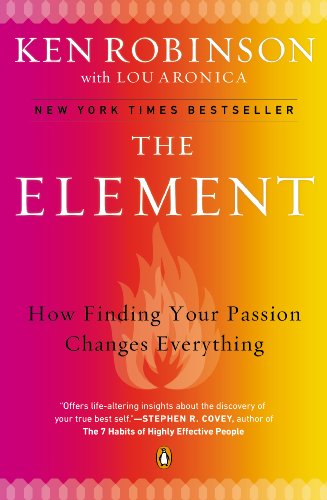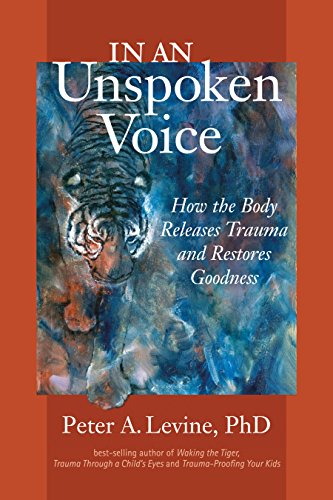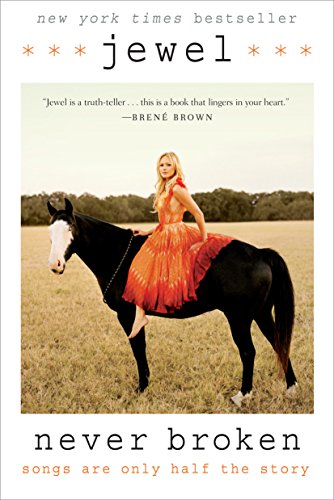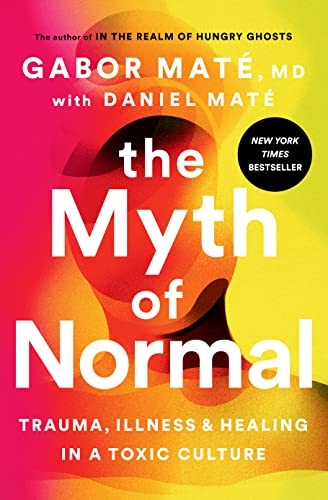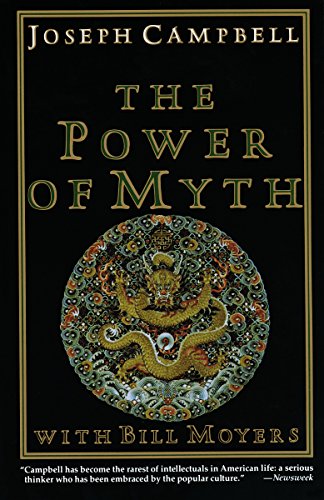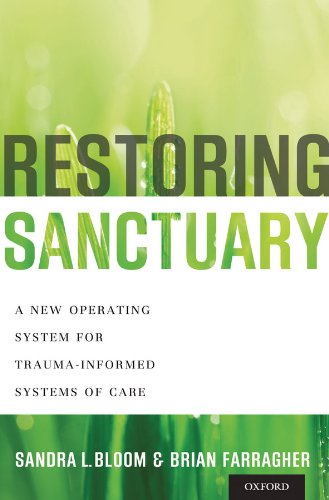Robert Bogue
May 10, 2023
No Comments
I was speaking with a friend when Gabor Maté’s work came up. The friend had seen a session and suggested that Maté had some good insight into trauma. That’s what led me to the oddly-titled The Myth of Normal: Trauma, Illness, and Healing in a Toxic Culture. It’s odd, because the fundamental premise is captured by a quote of Eric Fromm from The Sane Society: “The fact that millions of people share the same forms of mental pathology does not make these people sane.” Normal is what we expect, but maybe we should expect better of ourselves, others, and society.
Not Knowing
When someone is doing something that we know doesn’t work, the question should be whether they know it doesn’t work and they’re ignoring the research – or they don’t actually know. In medicine, the average time for an innovation to be widely adopted is 17 years. I’ve never seen a timeline for mental health – and perhaps that’s because they’re never adopted. So, there’s plenty of room to not know. There’s the time between the first published report and subsequent reports that either refute or confirm the initial observations. During the cone of confusion with conflicting reports, a failure to follow a particular path is similarly reasonable.
However, at some point, we know that something we’re doing isn’t working – or something that could work isn’t being done – and we’ve got to wonder why. The unfortunate answer is human nature. We’re lousy at statistical thinking. (See The Signal and the Noise, Noise, and Superforecasting.) We’re convinced that we know better because of our own biases. (See How We Know What Isn’t So and Thinking, Fast and Slow.) We can be swayed by the people we interact with to change our perceptions. (See Going to Extremes.) However, in the end, we must accept that we know that we’re lying to ourselves and others when we’re failing to follow what has been well-established. (See Telling Lies, Change or Die, and Immunity to Change for more.)
This is the sad state of mental wellness today. We don’t know our practices, we don’t do what we know to be true, and we often lie to ourselves that our experience is more relevant than well done statistical research by multiple parties.
Defining Trauma
Maté’s definition of trauma is, “Trauma is not what happens to you but what happens inside you.” In other words, anything can be traumatic or not depending on how you process it. Care must be exercised here not to say that someone who believes something is traumatic is more or less mentally healthy than another. Our preference for a favorite color is no more of an indicator about who is or isn’t mentally healthy. Seeing the impact of an automobile accident fatality may be a trauma – or not – to a first responder based on their experiences and unknowable similarities to other fatalities.
What matters is not finding blame nor judging the other person for not being “strong” enough to “handle it.” The truth is that when you’ve traveled the world enough, you realize that everyone has their own trauma, and new events can activate old traumas in very odd ways.
Bessel van der Kolk, of The Body Keeps the Score, defines trauma as such: “Trauma is when we are not seen and known.” I disagree. While not being seen and known can be a trauma, I don’t think all traumas are this. I believe that all traumas are about loss – material or not. Peter Levine points out, “Certainly, all traumatic events are stressful, but not all stressful events are traumatic.” That’s how I feel about requiring trauma be about not being seen.
Big and Little “T” Trauma
There seems to be some hidden competition in some people. My trauma is bigger (or smaller) than yours. It’s not atypical for Terri and I to hear from others that they have no right to share their trauma with us, because ours is greater. We’re quick to point out that all trauma is trauma. There is no such thing as a small trauma. It’s something that the person needs to work through. It may be deceptively hard or easy to resolve, and you won’t know by looking at it from the outside.
There is one aspect of trauma that is important and that is whether it’s sustained. A one-time event tends to cause less damage than systemic traumas that are recurring and that the victim feels they’re powerless to escape from. Consider the first responder who must choose to face traumatization every day on the job in exchange for their pay and their mission to help others.
The Pause Between Stimulus and Response
One of the best things about being human is the choice on how to respond. In Emotion and Adaptation, Richard Lazarus explains the difference between a stressor in the environment and stress in terms of how we respond. When we cultivate this pause, we create the opportunity to choose our response instead of just reacting to the stimulus. It was Paul Eckman’s study of microexpressions that led me to understand that the startle response is different – it’s wired in. However, our other emotions are processed differently. (See How Emotions Are Made.) The result is that we have a wide degree of influence over our emotions by changing the way we evaluate the stimulus in the environment.
Shame as Fundamentally Deficient
“Contained in the experience of shame,” writes the psychologist, Gershen Kaufman, “is a piercing awareness of ourselves as fundamentally deficient in some vital way as a human being.” I contrast this with Brené Brown’s work, which I summarize as saying that shame is “I am bad.” The difference here is in magnitude. Brown’s work is clear that someone isn’t “fundamentally deficient” – rather they are currently or situationally deficient, something that can be rectified.
Shame separates us from humanity. Our belief that the trauma we experienced was our fault – or we are to blame – separates us. It takes effort and often support to reconnect with others. The first step is often the need to reestablish compassion for ourselves. By separating ourselves from humanity, we’ve separated ourselves from the normal compassion that we offer to any other member of the human race.
Mind and Body
In Why Zebras Don’t Get Ulcers, Robert Sapolsky explains how stress impacts the bodies of humans and animals alike. In his work, the relationship of chronic stress and the negative effects on inflammation, immune response, and digestive problems are clear. There is no doubt that there’s very little separation (if any) between the mind (our consciousness) and the body. That being said, I resist those who would push the pendulum too far, as I explained in my review of The HeartMath Solution.
With cautions firmly in place, it’s clear that the way that our minds work – particularly as it relates to stress – has a very real and powerful impact on our bodily health. When we fight our natural responses – like suppressing our emotions instead of working through them – we necessarily impact our bodies in negative ways. People who say that all illness is a failure to meditate enough, have enough faith, or lighten their hearts are wrong. All of life is probabilities. A healthy body and healthy mind are a protective factor for disease, but it’s not a perfect defense. Because someone needs medical attention doesn’t mean they’re bad. Someone who needs mental health attention isn’t bad either.
It’s in the Genes
One of the insights into genetics over the past few decades has been epigenetics. That is how the environment activates or inactivates genes in ways that change outcomes. You may harbor a particular allele for a gene that could be harmful – but only if the environment activates it. This new awareness allows us to more clearly see the complicated interactions between genes and environments and recognize that even a person’s genes aren’t necessarily bad – it can be that they’re ill suited for their environments. (See The Blank Slate for a primer on epigenetics.)
The Line Between Healthy and Ill
We tend to think in absolutes, blacks and whites. However, as The Halo Effect explains, life is probabilities. At any given time, we’ve got dozens of microorganisms replicating inside of us. Should one of them become overly successful and reproduce in sufficient quantities before being squashed by our immune system, with or without the assistance of modern medicine, we’d call ourselves ill. However, the number of microorganisms that qualifies as ill isn’t a magical – or even knowable – number. We’re constantly in a state of repair and protection.
Part of the argument is that the better our mental health is, the more resistant that we’ll be to these organisms – which, owing to the immune system responses to stress, this is accurate. However, the path to this space isn’t as clear. We know that meditation can help – but we don’t have that all figured out, either. (See Altered Traits for more.)
Enough of Something that Almost Works
Vincent Felitti’s astute remark about addiction that “it’s hard to get enough of something that almost works.” It’s important to recognize that we’re likely to continue something when we believe that we’re “almost there.” In some contexts, it’s the sunk-cost fallacy. (See Thinking, Fast and Slow.) Maté isn’t a stranger to addiction. His colleague, Bruce Alexander, wrote the excellent The Globalization of Addiction. For the casual reader, it’s important to recognize that addictions are coping skills that have progressively come to control the person – rather than the other way around.
In this context, it’s easy to see how anything that almost works could become an addiction. Anything that quells the fear, anxiety, and disruption of a calm mind is a welcome friend when nothing else works. Certainly, the traditional substance-based addictions get priority, but we’ve long given up the pharmacological theory of addiction. (At least, if we’re reading and accepting the research, we should have.)
Women are Unexploded Bombs that Need Defusing
Michael Klein, former head of the family practice department at BC Women’s Hospital in Vancouver, told Maté, “You learn in a very biased environment that sees childbirth as scary and dangerous.” It’s not hard to understand that, with this perspective and training, doctors would tend to do caesarean section deliveries instead of natural childbirth. Natural childbirth is akin to letting the timer on the bomb click down to zero. Of course, a different view recognizes that the birth of a child particularly is a rite of passage. (See The Rites of Passage.) It’s a period of changing relationships to each other and to life for both the mother and the child, and in addition to the medical needs of both, there’s a need for connection.
Too many women believe that their medicalized birthing process was a trauma. It’s not surprising in the context of knives, being ordered what to do, and restraints, that it might be considered as such. How did we take such a precious moment and privilege and turn it into something that is traumatic?
Doesn’t Play Well with Others
I can’t recall whether I was told that I didn’t play well with others on a report card or whether it was just a fear of mine. I do know that, in the context of Maté’s beliefs that “plays well with others” means “conforms to society’s expectations,” I’ve failed miserably. I was building circuits and soldering by the time I was 11 years old. When I’d fumble and burn my fingers, my teachers would be concerned and call my mother. In today’s culture, I’m absolutely certain that we’d have a visit from child protective services.
That’s just one of a hundred ways that I was different from the norm – and why I had and sometimes still have trouble relating to others. It’s common to have people ask me about sports teams or what sports I’m interested in. I shrug a bit and say that it’s not me. Friends who have known Terri and I for years still forget that we really don’t watch television. Occasionally, we’ll watch a movie or, even less frequently, a series. If you ask us what we have watched, you’re likely to be disappointed – because we haven’t. (Conversely, if you ask if I’ve read a non-fiction book your odds are substantially better.)
It’s My Fault
There’s a trap when your parents aren’t good. You can decide that they’re not good people, but they’re the people that are responsible for taking care of you. Conversely, you can decide the poor treatment that you’re receiving is because you’re a bad kid. While the second seems worse, it’s much better, because there’s something you can do about it – you can be better. It’s an awful weight on a child, but it’s better than accepting that your parents aren’t good parents. You need them.
The controversy has been raging for decades about whether to spoil the child or to let them cry themselves to sleep (to simplify the argument). I cover this in good detail in my review of Parent Effectiveness Training. Here, I believe we need to find some balance. We need to help children, particularly young children, know that they are loved, heard, and supported. We need to let them know that they will be safe and okay. Conversely, we do need to allow them to learn skills like self-soothing.
However, the more interesting aspect of the discussion is the need to avoid performance-based love when interacting with our children. (See The Road Less Traveled for more.) When we withhold affection until the child does something that makes us feel or look good, we send the unconscious message that we don’t love them – we love what they can do for us. This makes it hard for them to develop self-esteem and recognize that they are inherently worthy of love. (See Words Can Change Your Brain for more.)
Consumer Culture
“Viewed from a corporation’s bottom line, one could not imagine a more desirable consumer profile than those who can’t get enough of what they don’t need but feel they must have.” We’re all, as the book Happier? explains, looking for a way to become happier and marketers, are selling it. They’re not selling products or features but rather the idea that some thing will make us happier than we are today.
Here, too, I’m not normal. I don’t care about brand names, and I never have. The cool kids could do what they do. I was going to do what I did. I live in the same house I’ve lived in for nearly 25 years. It’s not uncommon for my vehicles to be over 10 years old.
However, Maté’s point is that much of the world is caught on a hedonistic treadmill, believing that the next thing will be the thing that unlocks perpetual happiness and joy – despite decades of evidence in their own lives that it doesn’t work. Consumerism almost works – and is its own form of addiction.
Not Mental Illness, Injured
Maté shares some of Darryl Hammond’s story, including a visit with Dr. Nabil Kotbi, who reportedly said, “I don’t want you to call what you have a mental illness. You have been injured.” This is the heart of much mental illness. It’s an injury that we weren’t able to address. When the underlying trauma has been addressed, the mental illness not only abates but may disappear entirely. If we change from asking “What’s wrong with you?” to “What happened to you?”, we may find that the answers are much more productive. (See Restoring Sanctuary for more.)
The Lack of Biomarkers
Mental health has postulated for some time that there should be clear medical markers for problems, and once those markers are found, it will make diagnosis easier. A simple lab test or procedure like an X-ray, it was promised, would identify the specific problems opening up their resolution. However, we have not found these markers – and I seriously doubt we will. In my review of Descartes’ Error, I explained that some problems may be biological (hardware) but others may be conditioning (software). In either case, software can work around hardware issues.
I’m reminded of John Nash and how he found strategies to validate that the people he was interacting with were real people and not delusions. (I cover this more in my review of Incognito.) Rather than looking for the medical source of all problems, we should be looking at the ways that we can help people build better lives.
Normal or Disease?
“A University of British Columbia study looked at the prescription records of almost one million B.C . schoolchildren over an eleven-year period and found that kids born in December were 39 percent more likely to be diagnosed with ADHD than classmates born the previous January.” This leads to the question: is ADHD really just age-appropriate behavior? There’s definitely a growing consensus that we’re overmedicating children for ADHD when they may be doing age-appropriate behaviors.
How many other things have we turned into a medical (or mental) diagnosis that is completely appropriate for someone’s age? It’s a scary thought. It’s particularly scary when you consider the number of people on SSRIs and how few of them are in the suggested therapy. (See Warning: Psychiatry May Be Hazardous to Your Health.) We need to use medications to allow us to proceed through therapy productively – and then to stop them. The research supports this, but few people read the research.
Sensitive People
It’s a gift. It’s also a curse. When we look at the people who struggle, suffer, and die by suicide, they are disproportionately represented by the artists and the people who are sensitive. Opening yourself up to all the emotions available to you can be an amazing experience, and it can also expose you to raw suffering. The trick is to find ways of opening yourself up and being as sensitive as possible while remaining inside the space that your coping skills can handle. Too little emotional reception and expression, and you risk a psychotic break, as your emotions finally break through. Too much sensitivity, and you may not be able to moderate the feelings into a consistently safe range.
Sense of Control
In our bid to protect the parts of ourselves that are hurting, we aggrandize ourselves and seek to assert that we have control over things – all things. However, as Compelled to Control explains, control is an illusion. We never really have control over anyone else and often barely control ourselves. Kurt Lewin backs this up with his observation that behavior is a function of both person and environment – we can’t even control our own behavior all the time. (See A Dynamic Theory of Personality for more.)
This sense of control provides us with feelings of safety, and we’ll go to great lengths to protect it. It’s the only way that we can feel as if we won’t be hurt any longer.
It’s Not Worth It
In our work with burnout, we zeroed in on feelings of inefficacy at the core of burnout. (See Extinguish Burnout.) It’s the mismatch between what we’re putting into something and what we’re getting out. The problem is that our expectations and the results are rarely in harmony. Instead, we put in massive amounts of work and have little to show for it. It can feel disheartening, demotivating, and just bad. It’s a pathway to depression, and the research supports that burnout inventories are often early predictors for future depression.
Tragically, some people begin to believe that life is not worth it, it’s too hard, and they’re not good enough to keep on living.
Am I Enough
Ask people who are in helping professions if they’ve done enough at the end of their careers, and their answer may be yes. But if you ask them “Are you enough?”, the answer may be more difficult. There’s a subtle but important difference between I’ve helped so many people and I’m good enough as a human. It separates the results, which may be positive, from how we feel about ourselves and our lives. The results can be terrifying.
If we’re honest, we all struggle with “Am I enough?” It’s a constant source of question in myself and is shared by those who trust me enough to share their struggles. We forget – or discount – that we’re enough simply because we exist. We forget that the question itself is bad. Maybe someday I’ll get consistent at reframing the question to “Am I loved?” The answer – even if it’s just by the dog – is always yes. That should be enough, but if my friends and loved ones are any indication, getting there is harder than it seems.
Not As I Would Have It
Many people have heard the serenity prayer – at least the first part. The part that’s often dropped includes “taking the world as it is, not as I would have it.” It’s important, because it’s a grounding reminder that we must take reality for what it is – even if we don’t like that reality. We can’t will our dead loved ones to life. We cannot change what is merely by our thoughts. It’s hard to accept realities you don’t like. However, it’s harder to live with a perception of the world that isn’t real.
The thing is, while normal may be a myth, there is some objective reality out there – one that we are best to align ourselves with. If we want to reduce the friction and see the world as it is, we may just see that there is an illusion called The Myth of Normal.
